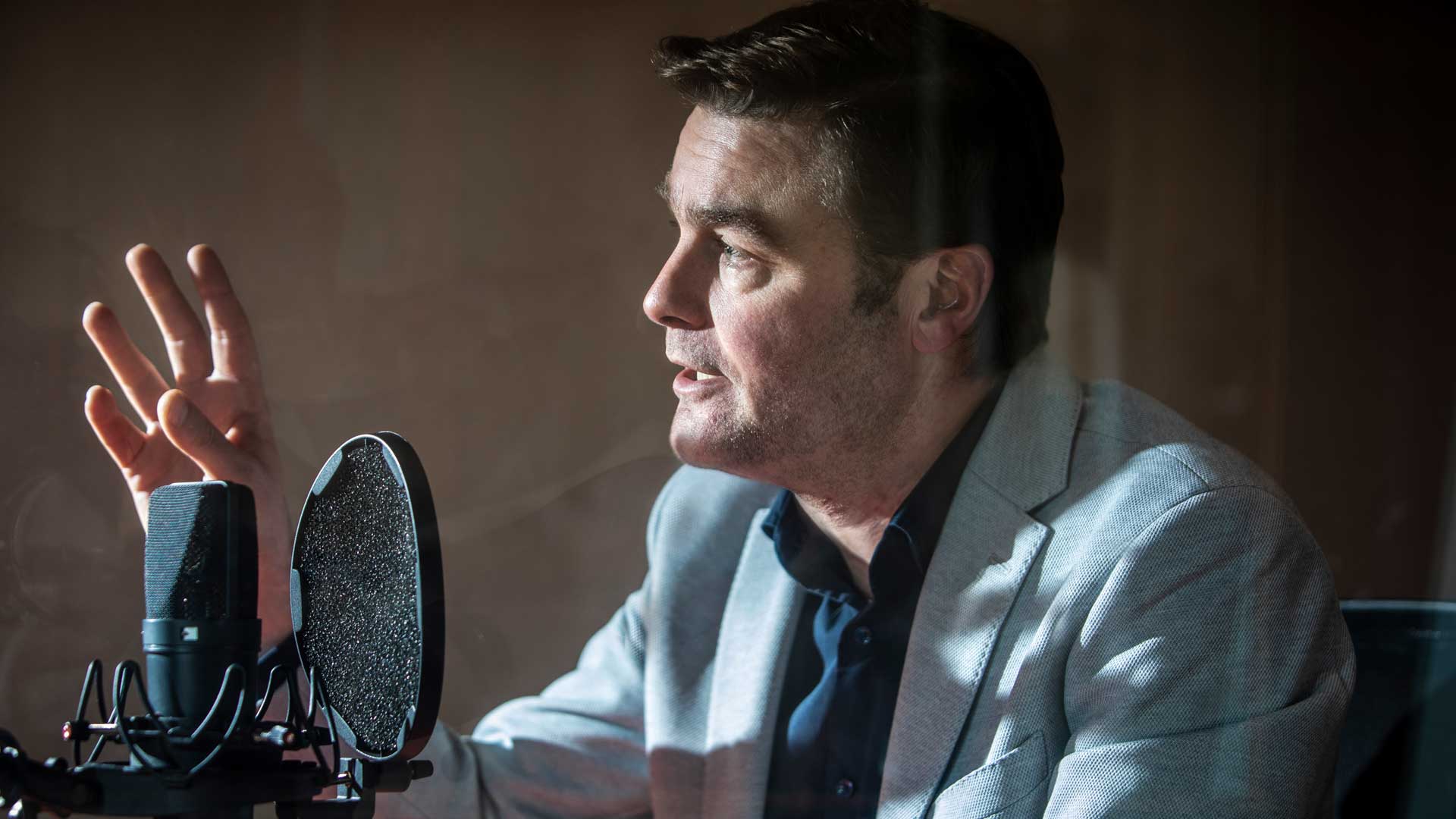
As with any investment, your capital is at risk.
Over the course of a long weekend at the end of January, the US imposed a moratorium on permitting new liquefied natural gas (LNG) export facilities, and Saudi Arabia scrapped its plan to add one million barrels a day of oil production capacity. Viewed in isolation, that looks like pretty rapid action on COP28’s unanimous new pledge to be “transitioning away from fossil fuels… to achieve net zero by 2050”.
The reality, of course, is more challenging. Not only is there political gamesmanship that’s quite unconnected to any interest in reducing carbon emissions in these announcements, but it’s easy to find stories that seem to head in the opposite direction. Not least, Ørsted’s recent 30 per cent cut to its 2030 target for offshore wind capacity and Exxon’s defiant lawsuit against those shareholders daring to push for faster emissions reduction.
The transitions in our energy and climate systems seem increasingly volatile and disorderly. For investors seeking to navigate them, extracting the signals from the noise is hard work. But we are finding a toolkit based on qualitative scenario analysis increasingly useful for this job.
As our recent webinar and papers detail, this starts with constructing a set of plausible narratives that describe very different but possible futures. They feature all the glorious technicolour of technology, policy, society and nature itself. We can then use these stories to challenge our preconceptions, explore our tolerance for risk and – perhaps most importantly – provoke new ideas and questions. Presented with varied pathways, we can also start to identify indicators, or ‘watch-fors’, that could indicate which of these futures might actually be unfolding.
There is arguably no greater noise in which to search for such signals than the prelude and performance of the annual COP (Conference of the Parties) meetings. Looking back to Dubai in mid-December, the following stand out:
- First and foremost, this UN-led process itself remains intact and, from a private sector perspective, is flourishing. In these tense times, it is one of the only global institutions that is borderline effective, enables debate and is crowding-in capital and innovation. Sure, there is no real governance of emission pledges and performance, but nations are confronted with their failures every year – and asked to do more. Corporations meet with policymakers, civil society and entrepreneurs, and commitments and connections are made.
- There was no abandoning of the commitment to 1.5C as the aspirational upper limit for global warming. The United Arab Emirates did not want to host the COP where ‘1.5 died’. Indeed, the final statement doubled down: for the first time, agreeing to a year by which global emissions should peak (2025) and stating the need for emissions reductions of 43 per cent by 2030 (from a 2019 base) and 60 per cent by 2035.
- Statements on the global energy mix showed increasing maturity. Fossil fuels need to go, transition fuels (biomass and, perhaps in some very low-priced markets, gas) have a role, nuclear is back, and a tripling of renewables capacity by 2030 is credible enough to get headline status. The accompanying commitment to double the pace of energy-efficiency gains recognised the importance of shifting the demand side and highlighted the win-wins of renewable electrification in an ever more digital world.
- Food systems were brought into the process. They are as controversial as fossil fuels and were similarly absent from specific mention at prior COPs. The widely signed UAE Declaration calls for full integration into national emissions commitments. Actions are still very emergent, but official recognition of the importance of managing this foundational sector for emissions, water and biodiversity sets the scene for policy shifts that must ultimately change what we eat and how and where we farm.
- Less positive are the areas of silence. Progress on the interrelated topics of finance, adaptation and international carbon markets was weak. The later we run on finance flows to developing markets, the more we risk failing to build resilience to climate shocks – be that from economic growth enabled by renewables deployment, agricultural modernisation or primary health and education. Quite apart from the long-run implications for people, it stalls the development of new asset classes and financing opportunities for the private sector. With Brazil now chairing the G20 and presiding over 2025’s COP30, we should not expect this silence to continue.
The messy middle
Where do these signals leave us? Past the beginning of the energy transition but firmly in a messy middle. We are not on a rapid, orderly pathway that will keep temperatures below a 1.5C increase, but we continue to bend the curve down from 3 degrees plus. This looks and feels like disorder. But with a bias to supporting and seeking out routes to climate success – a bias that could tip into rapid change if some exogenous shock (such as an extreme climate event or deep technological innovation) emerges.
The unpalatable truths that remain after the 2023 COP are the increasingly obvious rate of climate damage at +1.5C of average warming and a fossil fuel profile that looks like a very stubborn peak. These two are inextricably linked, and each compounds the risk to the other – and so to investors: the prospects of asset loss, failing insurance, regulatory interventions and more.
However, it is also a fact that technologies enabling a shift to a low-carbon economy are being deployed and developed faster than we think. As is the way of network effects, these technologies will continue to compound, to surprise and to impact more activities and more markets.
The recent acceleration in generative AI is an example of this vibrancy. Its computing capacity will need energy and water, but our preliminary evaluation suggests that this will be a challenge not of global scale but of potential regional congestion, which in itself creates opportunities for those with solutions.
Far more significant will be the use by innovators and enterprises to find unlocks in energy efficiency and electrification – especially in catalysts, batteries and materials processing. Anything, in fact, that can be done with less energy, less heat or with a better match of supply and demand. Our investment exposure for our clients to this theme is deep and runs from providers such as NVIDIA and Microsoft to users including Enphase, the solar power specialist, and Samsara, which uses data analytics to help companies optimise their vehicle fleets’ energy use and reduce emissions.
The headline pledges and cross-industry supply pacts made at COP28 are now also strongly supported by targeted industrial policies. These stretch across:
- The US, where the 2021/22 policy interventions have already seen, for example, cumulative electric vehicle (EV) investments jump from $15bn to $165bn.
- China, where clean energy accounted for all the growth in investment and 40 per cent of GDP gains in 2023.
- Other parts of the world, including the EU Net Zero Industry Act, India’s tariff barriers to jump-start domestic green manufacturing, Australia’s grant support for new mines and minerals processing, and so on.
Attractive investments
Investing through a disorderly transition suggests we should be prepared for volatility, expect solutions to be varied by type and region and, most importantly, look for managements with the awareness and adaptability to thrive nonetheless. Innovations that can create significant new companies will continue to appear, but the steady maturing of the transition also means that some existing companies can genuinely retool at scale. The universe of potentially attractive growth investments is broadening as change gathers pace.
Our investment and engagement work reflects this evolution. Across our client portfolios, we hold solutions innovators that range from the increasingly established – CATL and Northvolt in batteries, Albemarle in materials and Tesla, Rivian and BYD in EVs – to those pushing the frontiers in technology and policy – Climeworks and Aker in carbon capture, Ginkgo Bioworks in synthetic biology and Redwood Materials in recycling.
However, we also spend a lot of time understanding and supporting more established businesses to hopefully thrive in the transition.
A review of just a few of our recent conversations includes:
- BHP – transition metals and physical resilience
- Amazon – renewable fuels and supply chain influence
- Advanced Micro Devices (AMD) – a founder of the Semiconductor Climate Consortium, which aims to reduce greenhouse gas emissions across the electronics value chain
- Ryanair – further extending its technology and low-carbon fuel ambitions
- Reliance Industries – aiming to create green energy at scale in India
We hope that having contrasting future scenarios in our minds through these conversations and in our portfolio construction helps us appreciate the complexity of the real world, while staying focused on the signals that will endure.
Staying alert to those signals is not likely to get any easier in 2024. With politics everywhere, it’s shaping up to be another very noisy year.
Risk Factors
The views expressed should not be considered as advice or a recommendation to buy, sell or hold a particular investment. They reflect opinion and should not be taken as statements of fact nor should any reliance be placed on them when making investment decisions.
This communication was produced and approved in April 2024 and has not been updated subsequently. It represents views held at the time of writing and may not reflect current thinking.
Potential for Profit and Loss
All investment strategies have the potential for profit and loss, your or your clients’ capital may be at risk. Past performance is not a guide to future returns.
This communication contains information on investments which does not constitute independent research. Accordingly, it is not subject to the protections afforded to independent research, but is classified as advertising under Art 68 of the Financial Services Act (‘FinSA’) and Baillie Gifford and its staff may have dealt in the investments concerned.
All information is sourced from Baillie Gifford & Co and is current unless otherwise stated.
The images used in this communication are for illustrative purposes only.
Important Information
Baillie Gifford & Co and Baillie Gifford & Co Limited are authorised and regulated by the Financial Conduct Authority (FCA). Baillie Gifford & Co Limited is an Authorised Corporate Director of OEICs.
Baillie Gifford Overseas Limited provides investment management and advisory services to non-UK Professional/Institutional clients only. Baillie Gifford Overseas Limited is wholly owned by Baillie Gifford & Co. Baillie Gifford & Co and Baillie Gifford Overseas Limited are authorised and regulated by the FCA in the UK.
Persons resident or domiciled outside the UK should consult with their professional advisers as to whether they require any governmental or other consents in order to enable them to invest, and with their tax advisers for advice relevant to their own particular circumstances.
Financial Intermediaries
This communication is suitable for use of financial intermediaries. Financial intermediaries are solely responsible for any further distribution and Baillie Gifford takes no responsibility for the reliance on this document by any other person who did not receive this document directly from Baillie Gifford.
Europe
Baillie Gifford Investment Management (Europe) Limited provides investment management and advisory services to European (excluding UK) clients. It was incorporated in Ireland in May 2018. Baillie Gifford Investment Management (Europe) Limited is authorised by the Central Bank of Ireland as an AIFM under the AIFM Regulations and as a UCITS management company under the UCITS Regulation. Baillie Gifford Investment Management (Europe) Limited is also authorised in accordance with Regulation 7 of the AIFM Regulations, to provide management of portfolios of investments, including Individual Portfolio Management (‘IPM’) and Non-Core Services. Baillie Gifford Investment Management (Europe) Limited has been appointed as UCITS management company to the following UCITS umbrella company; Baillie Gifford Worldwide Funds plc. Through passporting it has established Baillie Gifford Investment Management (Europe) Limited (Frankfurt Branch) to market its investment management and advisory services and distribute Baillie Gifford Worldwide Funds plc in Germany. Similarly, it has established Baillie Gifford Investment Management (Europe) Limited (Amsterdam Branch) to market its investment management and advisory services and distribute Baillie Gifford Worldwide Funds plc in The Netherlands. Baillie Gifford Investment Management (Europe) Limited also has a representative office in Zurich, Switzerland pursuant to Art. 58 of the Federal Act on Financial Institutions (‘FinIA’). The representative office is authorised by the Swiss Financial Market Supervisory Authority (FINMA). The representative office does not constitute a branch and therefore does not have authority to commit Baillie Gifford Investment Management (Europe) Limited. Baillie Gifford Investment Management (Europe) Limited is a wholly owned subsidiary of Baillie Gifford Overseas Limited, which is wholly owned by Baillie Gifford & Co. Baillie Gifford Overseas Limited and Baillie Gifford & Co are authorised and regulated in the UK by the Financial Conduct Authority.
China
Baillie Gifford Investment Management (Shanghai) Limited
柏基投资管理(上海)有限公司(‘BGIMS’) is wholly owned by Baillie Gifford Overseas Limited and may provide investment research to the Baillie Gifford Group pursuant to applicable laws. BGIMS is incorporated in Shanghai in the People’s Republic of China (‘PRC’) as a wholly foreign-owned limited liability company with a unified social credit code of 91310000MA1FL6KQ30. BGIMS is a registered Private Fund Manager with the Asset Management Association of China (‘AMAC’) and manages private security investment fund in the PRC, with a registration code of P1071226.
Baillie Gifford Overseas Investment Fund Management (Shanghai) Limited
柏基海外投资基金管理(上海)有限公司(‘BGQS’) is a wholly owned subsidiary of BGIMS incorporated in Shanghai as a limited liability company with its unified social credit code of 91310000MA1FL7JFXQ. BGQS is a registered Private Fund Manager with AMAC with a registration code of P1071708. BGQS has been approved by Shanghai Municipal Financial Regulatory Bureau for the Qualified Domestic Limited Partners (QDLP) Pilot Program, under which it may raise funds from PRC investors for making overseas investments.
Hong Kong
Baillie Gifford Asia (Hong Kong) Limited
柏基亞洲(香港)有限公司 is wholly owned by Baillie Gifford Overseas Limited and holds a Type 1 and a Type 2 license from the Securities & Futures Commission of Hong Kong to market and distribute Baillie Gifford’s range of collective investment schemes to professional investors in Hong Kong. Baillie Gifford Asia (Hong Kong) Limited 柏基亞洲(香港)有限公司 can be contacted at Suites 2713-2715, Two International Finance Centre, 8 Finance Street, Central, Hong Kong. Telephone +852 3756 5700.
South Korea
Baillie Gifford Overseas Limited is licensed with the Financial Services Commission in South Korea as a cross border Discretionary Investment Manager and Non-discretionary Investment Adviser.
Japan
Mitsubishi UFJ Baillie Gifford Asset Management Limited (‘MUBGAM’) is a joint venture company between Mitsubishi UFJ Trust & Banking Corporation and Baillie Gifford Overseas Limited. MUBGAM is authorised and regulated by the Financial Conduct Authority.
Australia
Baillie Gifford Overseas Limited (ARBN 118 567 178) is registered as a foreign company under the Corporations Act 2001 (Cth) and holds Foreign Australian Financial Services Licence No 528911. This material is provided to you on the basis that you are a ‘wholesale client’ within the meaning of section 761G of the Corporations Act 2001 (Cth) (‘Corporations Act’). Please advise Baillie Gifford Overseas Limited immediately if you are not a wholesale client. In no circumstances may this material be made available to a ‘retail client’ within the meaning of section 761G of the Corporations Act.
This material contains general information only. It does not take into account any person’s objectives, financial situation or needs.
South Africa
Baillie Gifford Overseas Limited is registered as a Foreign Financial Services Provider with the Financial Sector Conduct Authority in South Africa.
North America
Baillie Gifford International LLC is wholly owned by Baillie Gifford Overseas Limited; it was formed in Delaware in 2005 and is registered with the SEC. It is the legal entity through which Baillie Gifford Overseas Limited provides client service and marketing functions in North America. Baillie Gifford Overseas Limited is registered with the SEC in the United States of America.
The Manager is not resident in Canada, its head office and principal place of business is in Edinburgh, Scotland. Baillie Gifford Overseas Limited is regulated in Canada as a portfolio manager and exempt market dealer with the Ontario Securities Commission (‘OSC’). Its portfolio manager licence is currently passported into Alberta, Quebec, Saskatchewan, Manitoba and Newfoundland & Labrador whereas the exempt market dealer licence is passported across all Canadian provinces and territories. Baillie Gifford International LLC is regulated by the OSC as an exempt market and its licence is passported across all Canadian provinces and territories. Baillie Gifford Investment Management (Europe) Limited (‘BGE’) relies on the International Investment Fund Manager Exemption in the provinces of Ontario and Quebec.
Israel
Baillie Gifford Overseas Limited is not licensed under Israel’s Regulation of Investment Advising, Investment Marketing and Portfolio Management Law, 5755-1995 (the Advice Law) and does not carry insurance pursuant to the Advice Law. This material is only intended for those categories of Israeli residents who are qualified clients listed on the First Addendum to the Advice Law.
10045592 93127




